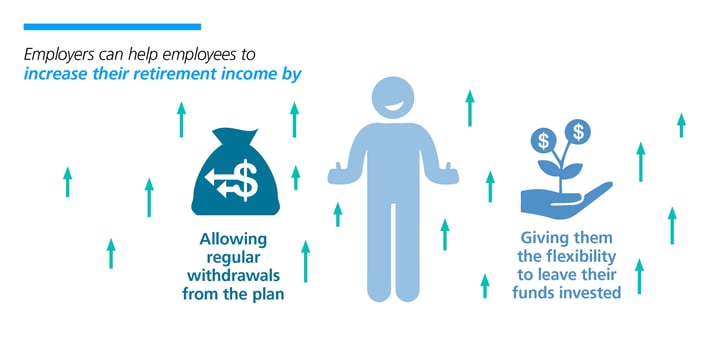Shaping plan design for better member outcomes
ArticleJune 1, 2019
In this article we look at how giving employees flexibility over how they take their benefits can avoid the disadvantages of simply taking a lump sum when they leave service.
As a leading provider of international retirement savings, we’re keen to share our expertise and insights with multinational businesses seeking benefits solutions for their globally mobile employees. Please join us as we explore the world of international employee benefits and the challenges and opportunities they present for your business.
ARTICLE 08
International pension plans (IPPs) offer flexibility for mobile employees who are unable to join a locally approved plan. There are no prescriptive rules on investment options, contribution amounts, member eligibility, or when and how the benefits can be taken. In addition, employees can accrue benefits in a single pot and in a currency that fits with their retirement plans.
However, when it comes to leaving employment and retirement, an IPP’s flexibility generally stops, with most employers asking employees to take their accrued benefits as a lump sum as soon as they leave employment, whether at retirement or earlier. Employers can help employees to increase their retirement income simply by giving them the flexibility to leave their funds invested until they are ready to make a decision or retire, or by allowing regular withdrawals from the plan.

Supporting employees when they leave service or retire
Although plan rules may permit other options, employees are often given no choice other than to take their accrued benefit as a lump sum.
In some cases this could be the right thing to do – for example, if the value is low or if the employee has already identified a use for the money. However, it’s also important that the employee understands that they are taking out what should be a large part of their retirement provision.
In a lot of cases though, there are disadvantages to taking a lump sum:
|
Significant tax charges
|
|
|
Very low interest rates on bank investments |
|
|
Adviser fees incurred to find an alternative investment |
|
|
Potentially higher charges for retail investment products |
|
|
Depending on plan rules |
|
|
Potential to miss out on investment growth |
All of these pitfalls can be avoided by giving employees the opportunity to remain invested in the plan – continuing to benefit from any investment growth and lower institutional fund charges – while they research other options.
In fact, it’s possible to give employees even more flexibility within an IPP, and we’ll take a closer look at how in our next article.
Find more information about our award-winning International Pension Plan and other savings solutions here.
